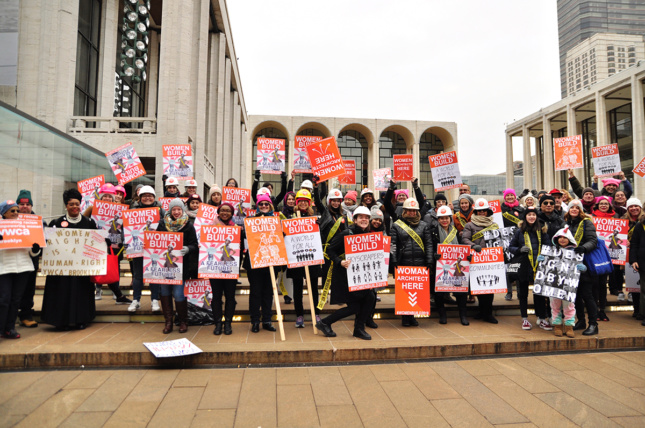Architecture is notoriously known as one of the less lucrative professional fields in the United States, especially for young practitioners. But according to a new report by the Bureau of Labor Statistics, where you live and work as an architect can majorly affect your annual income now and in the future. Forbes recently reported on the agency’s updated Occupational and Employment Statistics data, which reveal where architects can earn top salaries.
For fully-licensed architects working full-time in the field as of May 2017, these are the average incomes found within the top 5 states:
New York: $109,520
Massachusettes: $103,920
Texas: $99,580
Arizona: $95,220
California: $95,060
Alaska, of all places, provides the sixth-highest average salary to practitioners, followed by Alabama, New Hampshire, West Virginia, and Minnesota. Forbes noted that if the District of Columbia were included as a state, it would rank third. Per the Occupational and Employment Statistics data, the 2017 mean annual wage for Utah, the worst state to practice architecture in terms of earnings, was $67,520. Arkansas, Maine, Idaho, and Vermont trail behind as well, offering average salaries that, when calculated altogether, hover at $70,725.
In thinking about this, it’s important to consider just how many architects work in the country. According to the report, there are an estimated 103,100 architects employed in U.S. firms. California boasts the most architects with 13,880. New York has about 12,740. From there the stats drop dramatically with Texas employing 8,730, as Illinois and Florida employing 5,140 and 4,490 respectively.

While these stats offer huge insights into geographical demographics, they do not break down top earnings by ethnicity, race, gender, or age. It’s no secret that even in the highest-ranking state on this list, New York, junior architects and interns—or up-and-coming designers usually under the age of 30—receive significantly less money until they earn their licensure. Even then, in some cases, those newly-minted architects aren’t given promotions or raises. It depends on the ethics and goals of firms in which they work.
For women and minority architects, the reality can be just as harsh, no matter the level. Kim Dowdell, the new president of the National Organization for Minority Architects (NOMA), recently told AN that the wealth gap in the U.S. trickles so far down that young minority students are less and less likely to pursue the profession due to the cost of an architectural education. “Many of my colleagues have really high levels of student debt coupled with comparatively low professional salaries (consider doctors and lawyers) and limited flexibility and financial freedom,” she said. “How can we as an organization motivate or incentivize people to pursue architecture knowing that compensation is a challenge and the student loan debt is higher than ever?”
Architecture firms @ZHA_News and @Hawkins_Brown have become the latest practices to report their gender pay gaps – with both failing to improve on their figures from last year. #equalpayday #genderpaygap https://t.co/JANJG9KVPY
— AIA Advocacy (@AIA_Advocacy) April 2, 2019
Pay equity is arguably one of the biggest issues in the industry today. In February, The Architects’ Journal released its 2019 report on the U.K.’s gender pay gap, which unveils all documented salaries at firms that employ 250 or more people. Legally, these large-size practices must publicly reveal their gender pay gap in an effort to spread awareness on the issue. According to the article, Foster + Partners, which employs 1,061 people, includes 36 percent female architects who earn a median pay that’s 6.9 percent lower than their male counterparts. Zaha Hadid Architects has nearly the same amount of women on staff as Foster’s office, but the median pay gap is 21 percent. Arup, the global engineering and design firm, pays its female employees 16.9 percent less.
Here in the U.S., where it’s not a requirement to disclose firm-wide salaries, people are beginning to think more seriously about how gaps in gender, race, and pay equity may affect the internal culture of a firm and the subsequent projects produced its employees. Last summer, Jeanne Gang revealed she had closed the pay gap at Studio Gang, becoming the first firm in the country to do so. As Gang pointed out in her Fast Company article, the pay gap is one of architecture’s greatest injustices and diversity in design isn’t just about filling a quota with different faces of different colors in a single office. It’s about recognizing the value that architects of all backgrounds bring to the table, and compensating them appropriately.
Like any profession, the dollar amounts for an architect’s salary will differ from state to state, but the respect for the mind and skills of a designer, no matter their race, gender, or language, should be the same across the board. That, according to Gang, will truly allow creativity to flourish.











